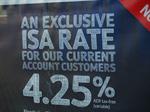Course Content and Structure

There are 9 lessons in this course:
1. The Economic Environment
-
The world of economics
-
Scarcity
-
Opportunity costs
-
Goods
-
Definitions
-
Economic systems
-
Economic ownership
-
Performance criteria for an economy
-
Other economic performance indicators
-
Basic economic principles
-
Law of demand
-
Law of Substitution
-
Law of diminishing return
-
Law of diminished marginal utility
-
Competition
-
Sustainability
-
Total Quality Management
-
Strategic Planning
-
Creating a strategic plan
 2. External Influences
2. External Influences
-
Monopoly
-
Monopolistic Competition
-
Oligopoly
-
Perfect competition
-
External Influences
- International markets and tradeable commodities
-
Globalisation
-
Supply and demand
-
Market forces
-
Demand
-
Supply
-
Elasticity
-
Economics of scale
-
Cost structures
-
Liquidity
3 . Information Management
. Information Management
-
Scope and nature of office work
-
Functions of an office
-
Common jobs in an office: reception, clerical, secretarial, information processing
-
Departments within an organisation
-
Office processes
-
Data knowledge, storage and management
-
Filing systems
-
Classifying information
-
Hard copy
-
Filing procedure
-
Data protection
-
Financial records
-
Books needed in business
-
Different ways to approach bookkeeping
-
Steps in the bookkeeping process
-
Developing a record keeping and accounting system
-
Flow of information
-
Financial reports
-
Ledger
-
Journal
-
Source documents
-
Cash transactions
-
Credit transactions
-
Returns and allowances
-
Other business documents
-
Use of business documents
-
The cash book
-
Credit sales and credit purchases journal
-
The general journal
-
The ledger
-
A trial balance
-
Bank reconciliation
-
Petty cash
4. Strategic Planning
-
Strategic planning
-
Documenting the strategy
-
Operational planning
-
Documenting an operational plan
-
Key components of a business plan
-
SWOT analysis
-
A planning procedure
-
Decisions
-
What to plan for
-
Finance
-
Structure for a Financial plan
-
Developing a budget
-
Structure for a marketing plan
-
Plan drawing
5. Implementing Strategies
-
Implementing strategy
-
Benchmarking
-
Reviewing strategy and strategy management
-
Environmental audits
-
Key elements of EIA
-
Steps in an environmental assessment process
-
Study design
-
Baseline studies
-
Predicting impacts
-
Mitigation measures
-
Flora and fauna assessment
-
Open space management plan
-
Rehabilitation plan
6. Developing a Business Plan
7. Business Control Systems
Business Control Systems
-
Financial statements
-
The balance sheet
-
Classification in the balance sheet
-
Working capital
-
Profit and loss statement
-
Link between profit and balance sheet
-
Depreciation of assets
-
Analysis and interpretation of accounting reports
-
Analytical ratios
-
Ratio yardsticks
-
Profitability ratios
-
Operating efficiency ratios
-
Efficiency ratios and profitability
-
Liquidity ratios
-
Liquidity analysis and cash budgeting
-
Financial stability ratios
-
Gearing rate of return on investment
-
Limitations to ratio analysis
-
Risk
-
Risk analysis
-
Contingency planning
-
Business systems
-
Quality systems
-
Innovation management
-
PERT (Program evaluation and review)
-
CPA (Critical path analysis)
-
GNATT Charts Fastest and slowest completion times
-
Business expansion and sources of finance
-
Record keeping
8. Evaluating Marketing
9. Marketing Strategies
-
Target markets and market segmentation
-
Targeting strategies
-
Defining your target market
-
Determining market segmentation
-
Projecting the future
-
Positioning
-
Case study
-
The business portfolio
Each lesson culminates in an assignment which is submitted to the school, marked by the school's tutors and returned to you with any relevant suggestions, comments, and if necessary, extra reading.
 Aims
Aims
- Explain the economic environment in which business operates.
- Appraise the impact of external influences.
- Establish the type of information required for operations in both commercial businesses and service organisations.
- Examine the process and analyse approaches to strategic planning.
- Examine the process and analyse approaches to strategy formation and implementation.
- Prepare a business plan.
- Assess the importance of business control systems utilising IT integration into financial management; prepare, read and interpret annual statements, appreciate the importance of budgetary control.
- Identify the benefits involved when preparing marketing plans; analyse organisational strengths, weaknesses, opportunities and threats.
- Formulate customer-orientated and reliable strategies for selected markets.
Get Your Financial Operations in Order

When looking at any business, the owner or manager needs to know whether the business is making profit. It does not matter how small the business is, accounting should be seen as being part of the overall management strategy, with financial information relating to all facets of the business being readily available.
There are many different uses for financial information and the nature of these uses varies depending on its intended purpose. It is the user of the financial information who determines how it is to be used. Accounting must meet the needs of the individual users and therefore must be flexible enough to satisfy a variety of purposes.
Some of the main users of accounting information and their areas of interest are:
-
Owner/manager: profit, liquidity, stability, sales, growth, budgets, stock management, debtors, creditors, rates of return.
-
Prospective owners: budgets, future earnings, predicted returns, stability, growth.
-
Banks/Lenders: liquidity, stability, budgets.
-
Suppliers of Materials: credit rating, reliability, stability.
-
Government Departments: e.g. Taxation department, Bureau of Statistics, Small Business Corporation – these have specific needs pertaining to their own specialist areas.
-
Employees/Unions: stability of employment, profits – likelihood of wage increases?
If a business owner is well informed in relation to all aspects of the firm, it has a better chance of not only surviving, but of being successful.
Financial information helps management to make better decisions. In order to do this, financial data must be collected, sorted, classified, recorded and finally reported in a meaningful form. These steps make up the basic accounting process.
It is extremely important to keep accurate, clear and accessible records of all financial transactions which take place in a business. Different businesses have different types of book keeping systems. The options are very great. A balance must be struck though where you decide between a system which gives you the detail you require and one which doesn't take too much time to maintain.
Financial records are needed because:
-
They help you manage your finances.
-
You can make decisions about what something is likely to cost in the future by seeing what it cost in the past.
-
They allow you to see whether your business is making a profit or loss.
-
They give you a basis upon which you can calculate what you will charge your customers/buyers.
-
They allow you to prepare and submit you tax returns.
-
They are legally required by government.
-
You can track the fluctuation in cash flow, month by month.
 By law, you are required to keep the following financial records for taxation purposes:
By law, you are required to keep the following financial records for taxation purposes:
-
Bank statements, deposit books and cheque butts
-
Sales transactions, together with the relevant source documents
-
Purchase transactions, together with the relevant source documents
-
Expense payment transactions, together with the relevant source documents
-
If you employ staff:
-
Wages transactions
-
Fringe benefits Tax Records
-
Superannuation or Pension guarantee records
-
If you are a contractor or sub-contractor
-
Prescribed payment records.
-
If you are involved in the clothing or fishing industries
-
Reportable payment records
-
Expenditure relating to assets
-
Stock-take records
-
List of debtors and creditors
-
Depreciation schedules for assets and stock
-
Lease agreements and documentation
-
Records pertaining to the start-up of a business, and the sale of a business
-
Occupational health and safety records.
Each of these records also gives us a way of monitoring business performance and controlling the business operations.
Who Should Study This Course?
- Business owners
- Entrepreneurs
- Start-up owners
- Managers
- Supervisors
- CEOs
Study with us to learn to run any business.
WHAT NEXT?
Register to Study -Go to panel toward top of this page (right column)
or
Get Advice -Use our FREE COUNSELLING SERVICE to contact a tutor
CLICK TO CONTACT US